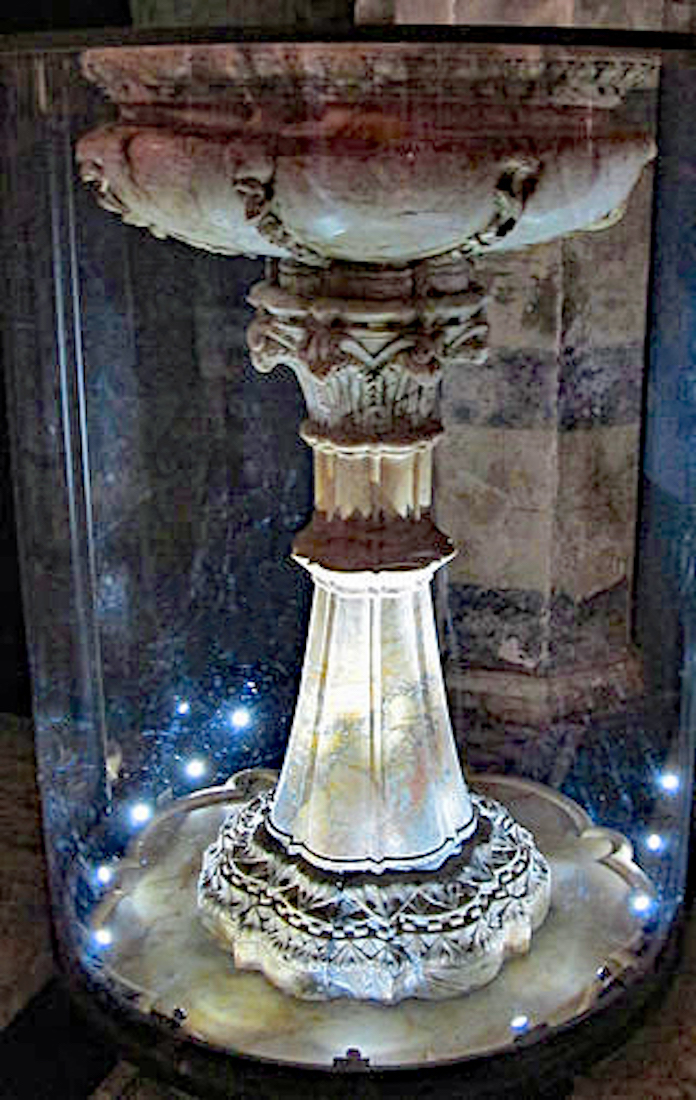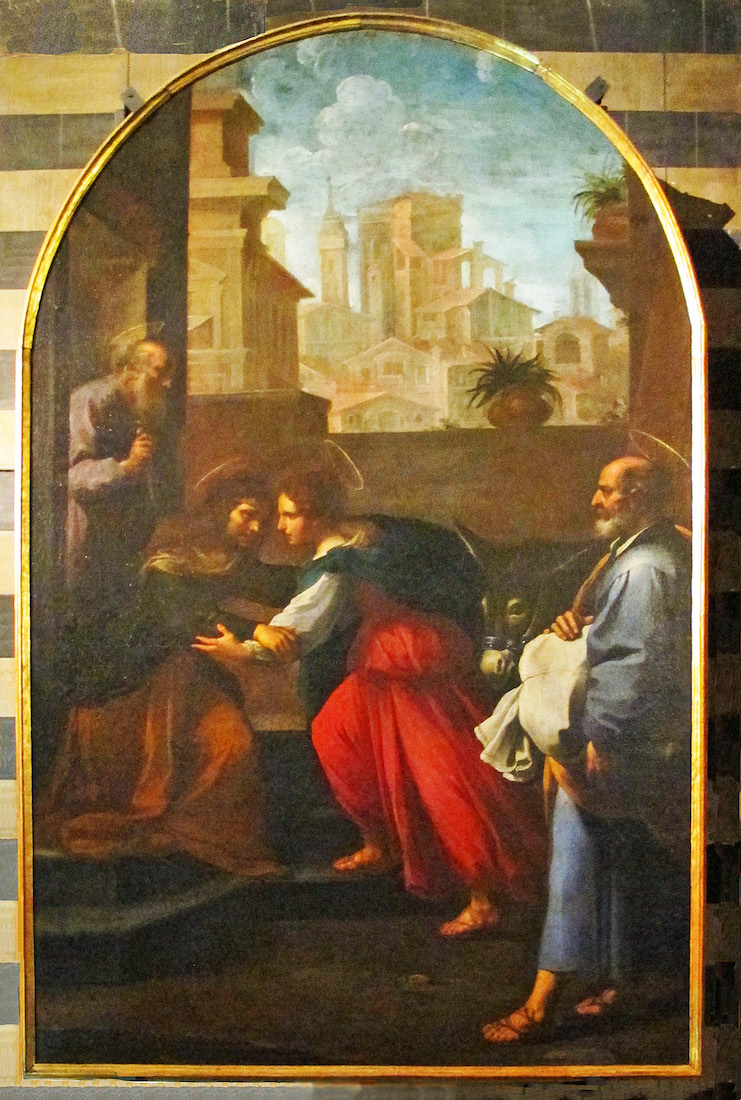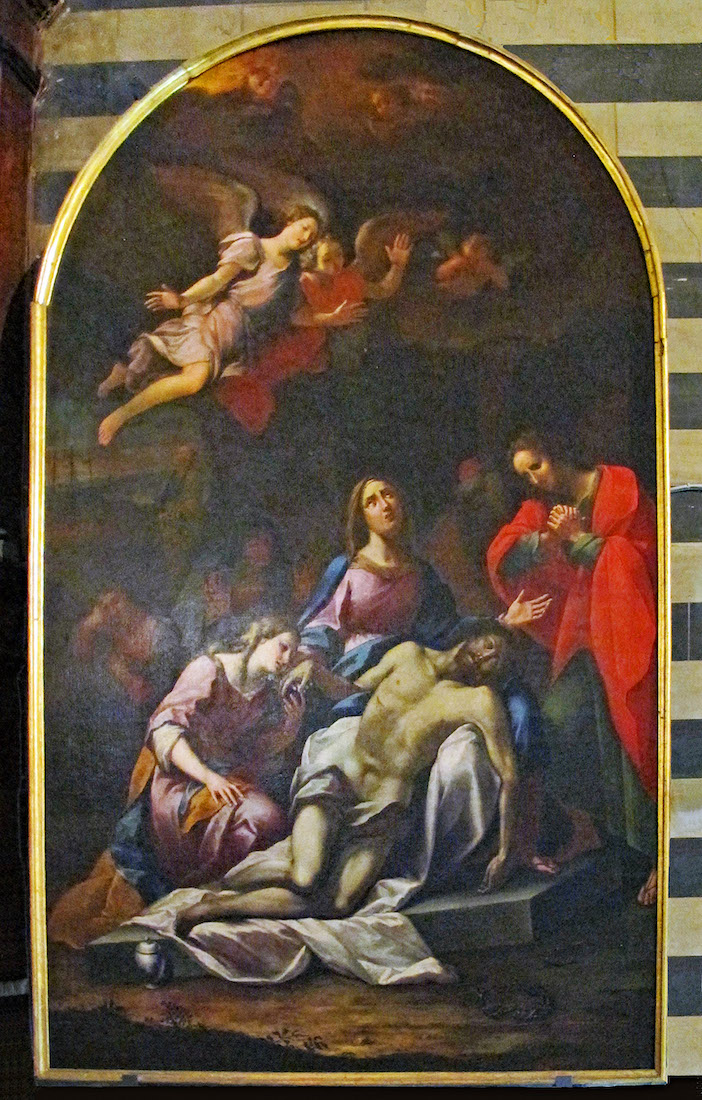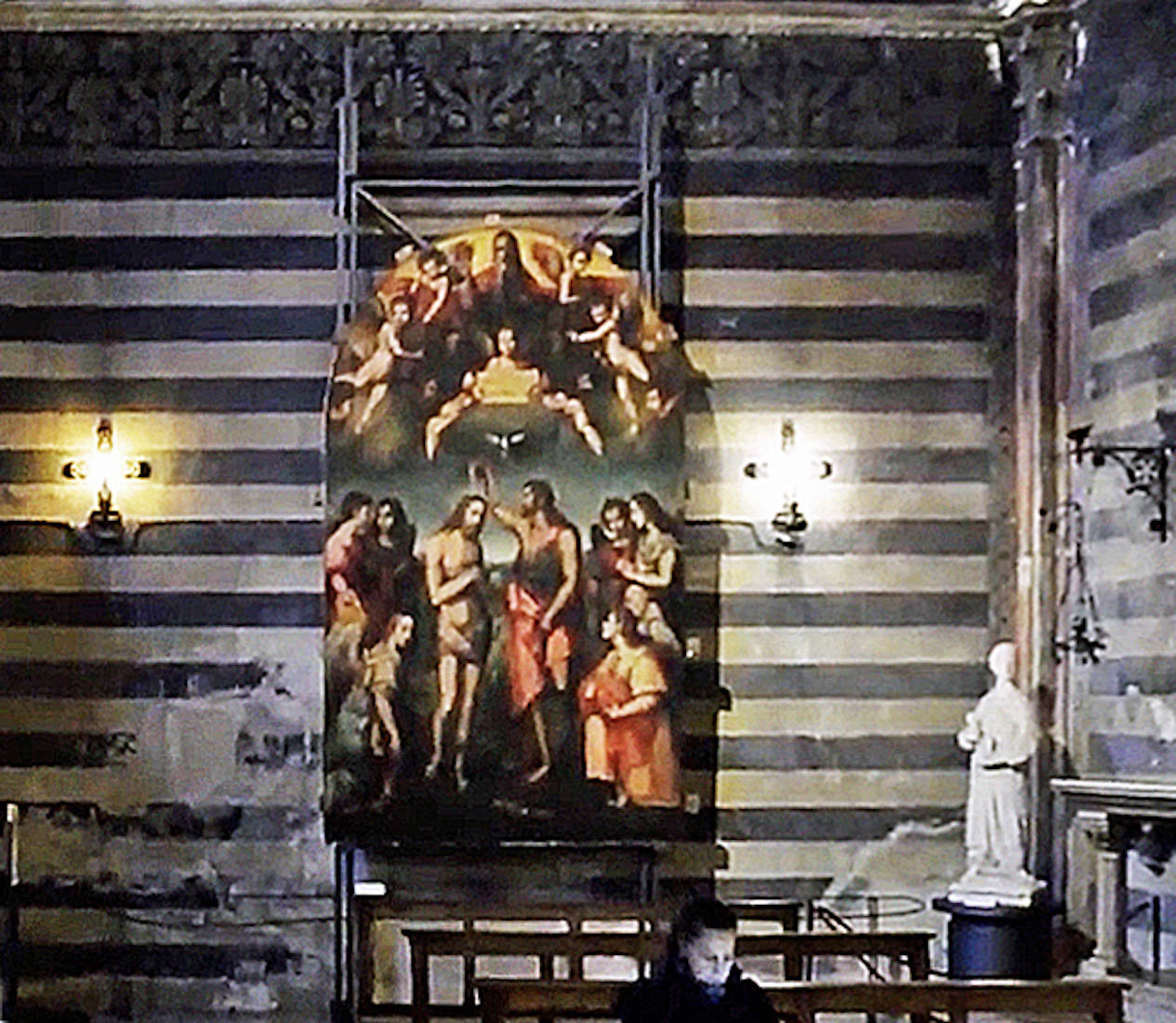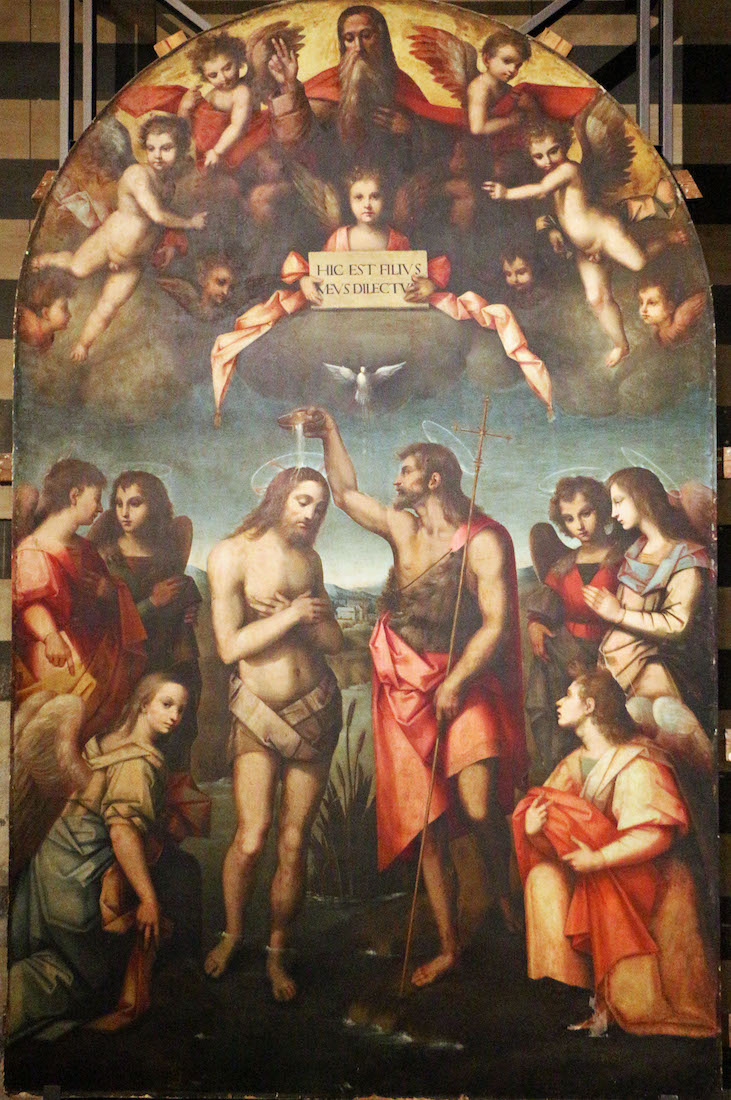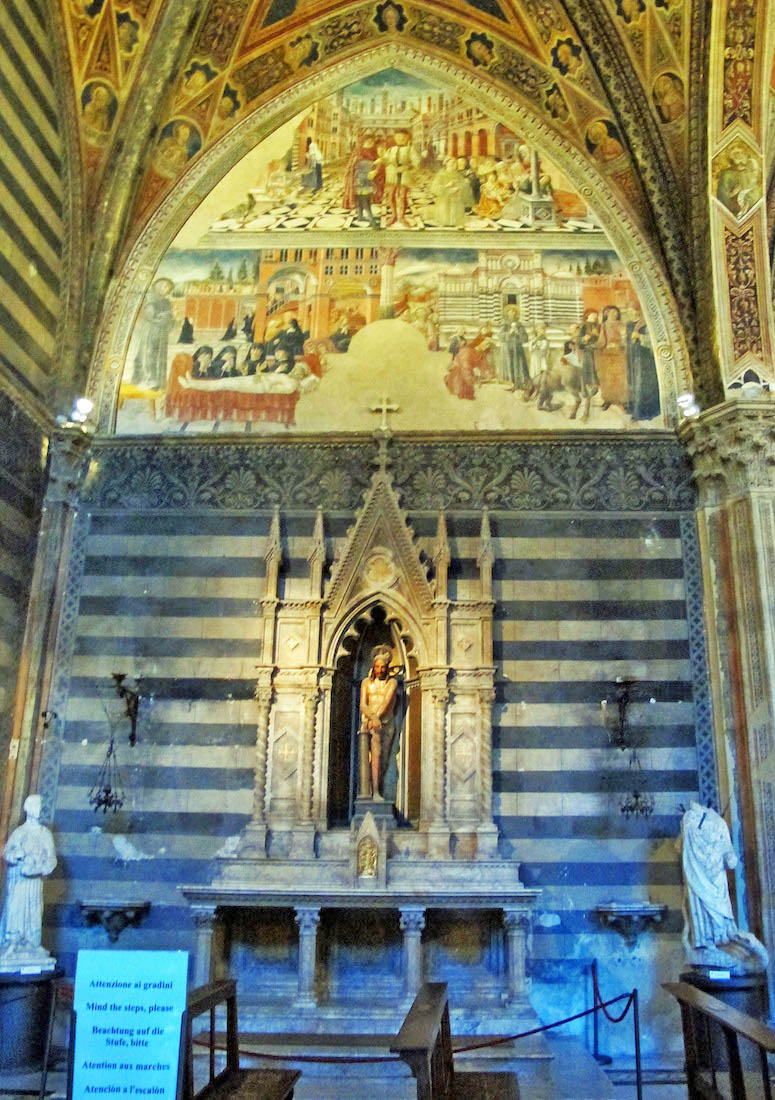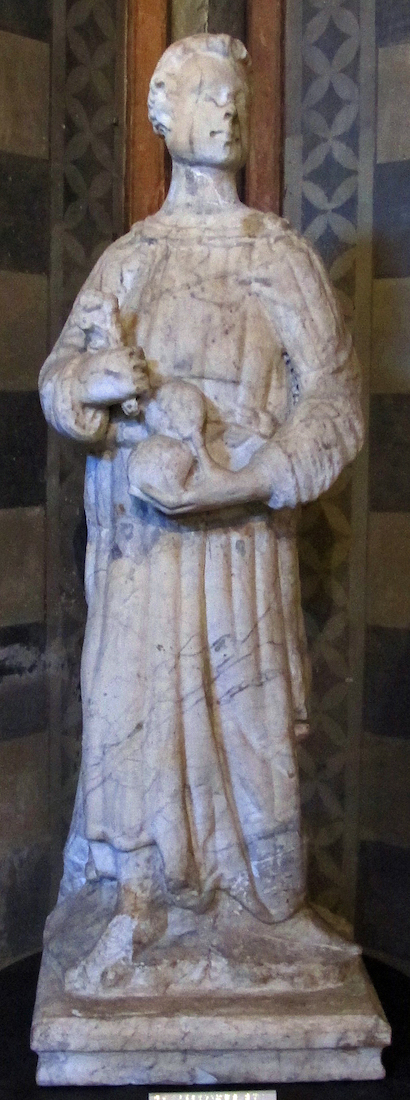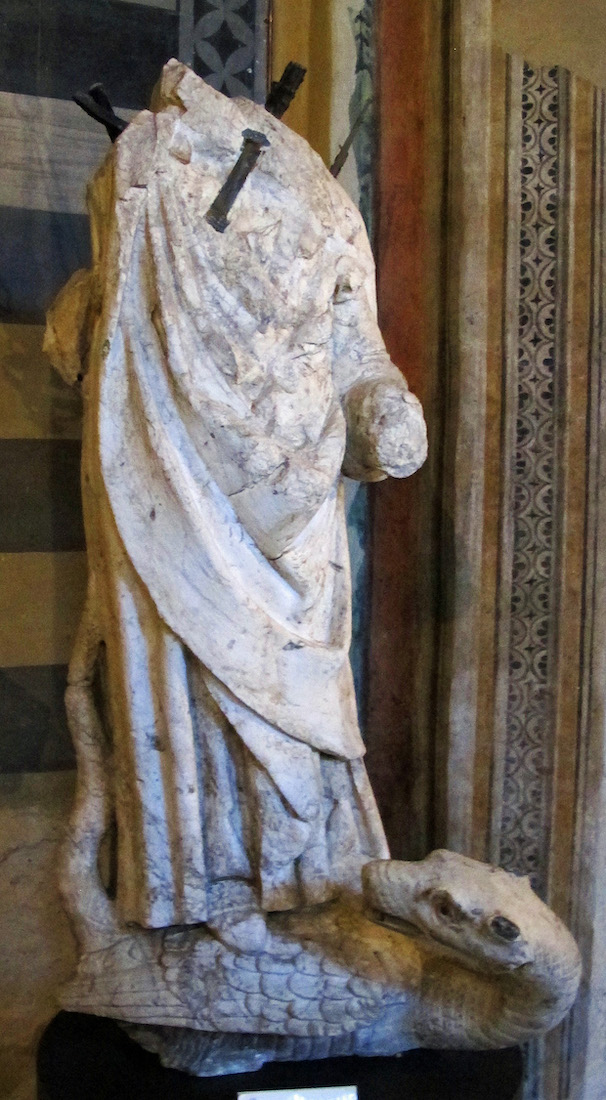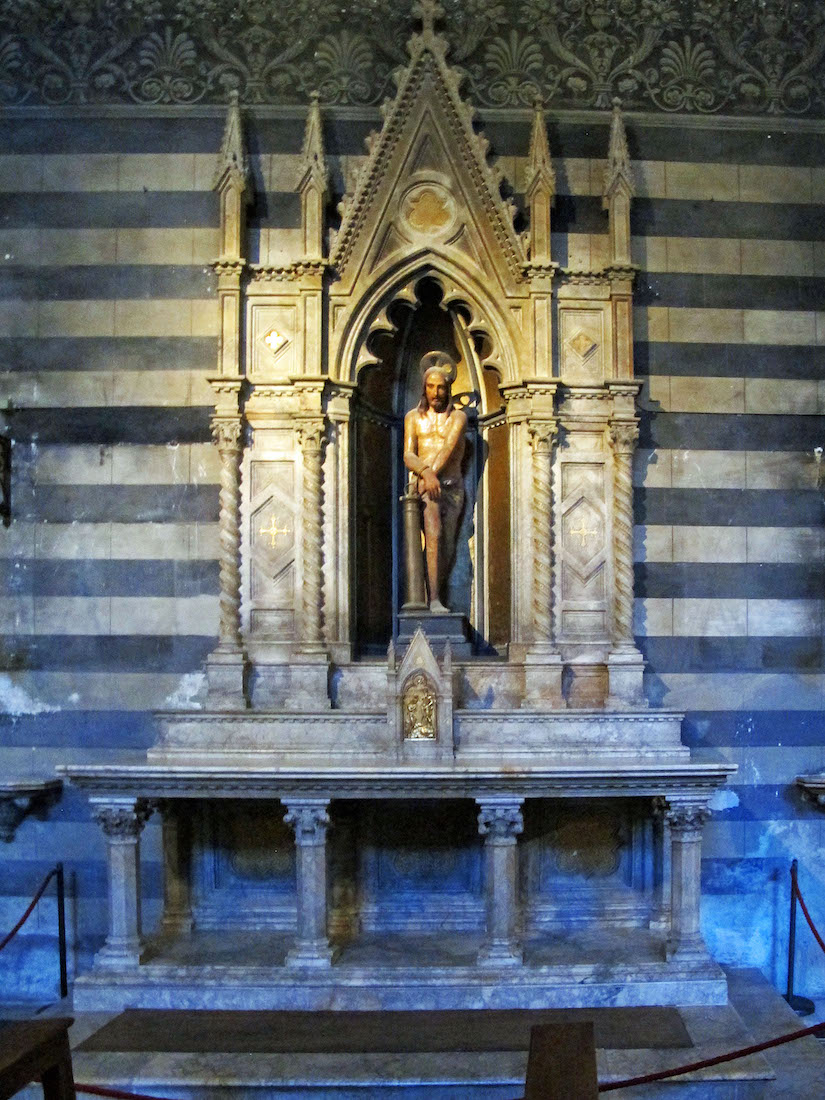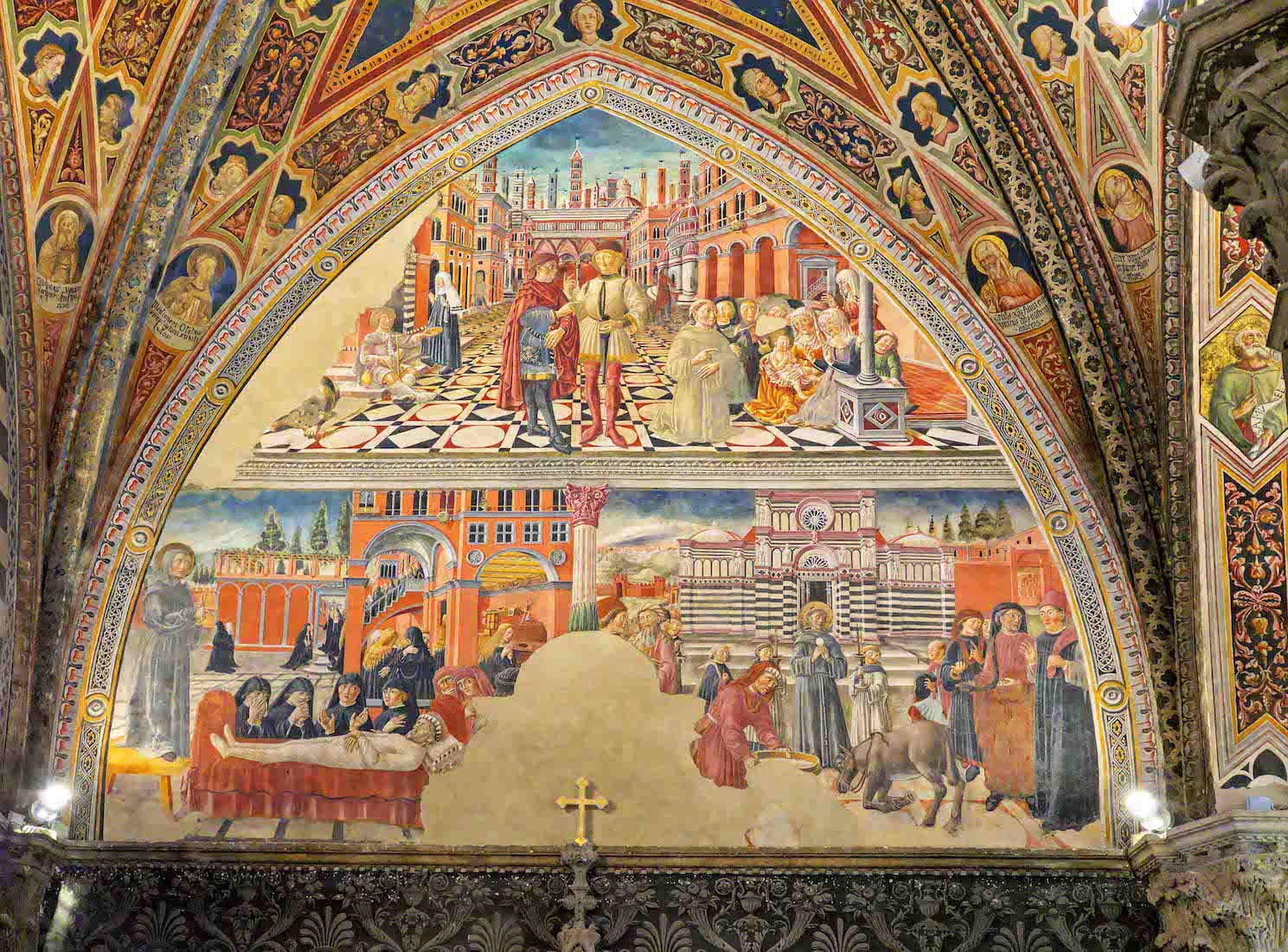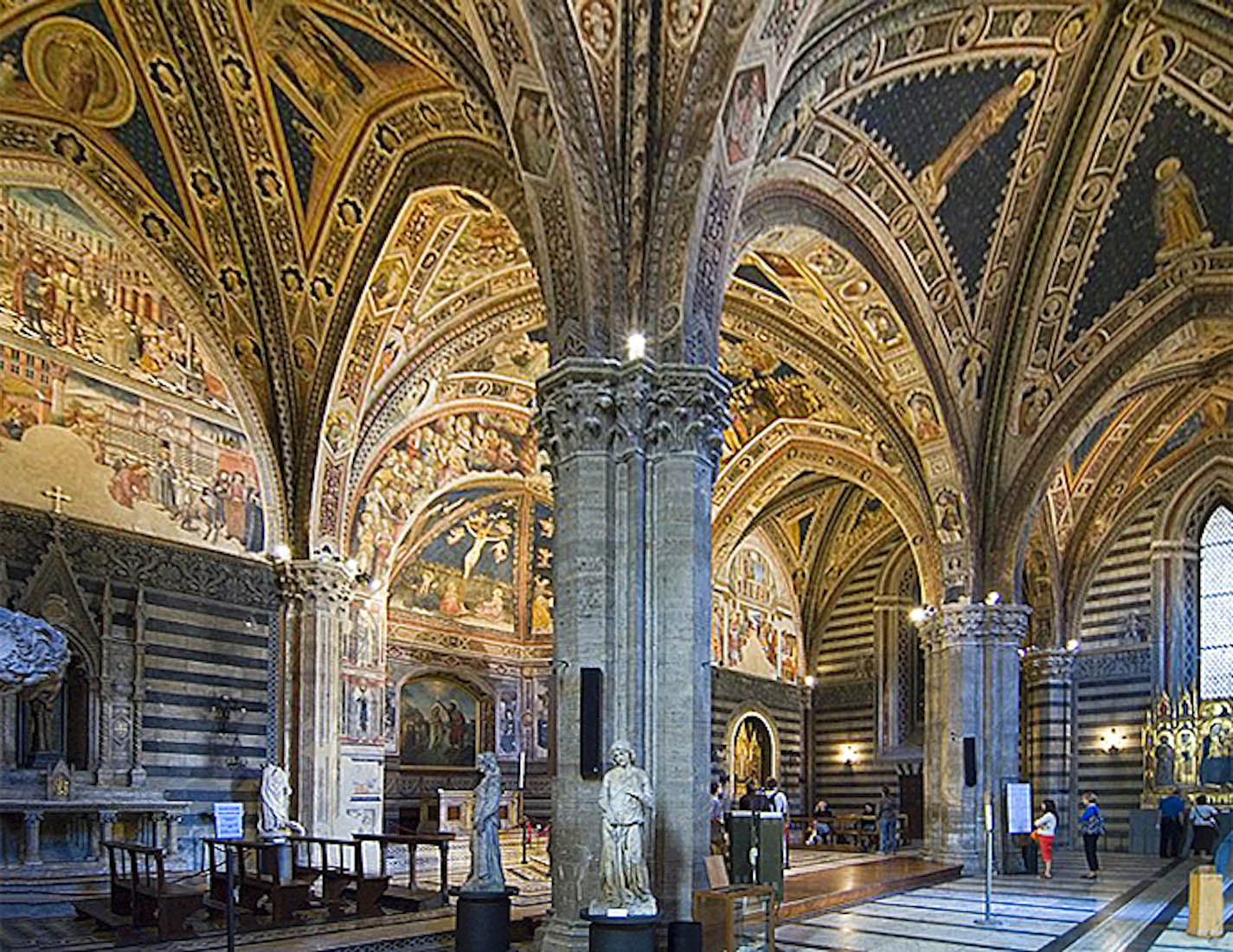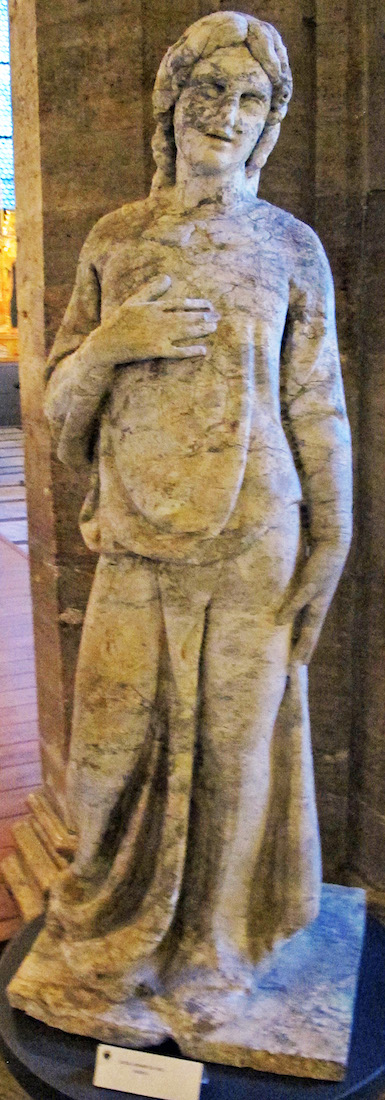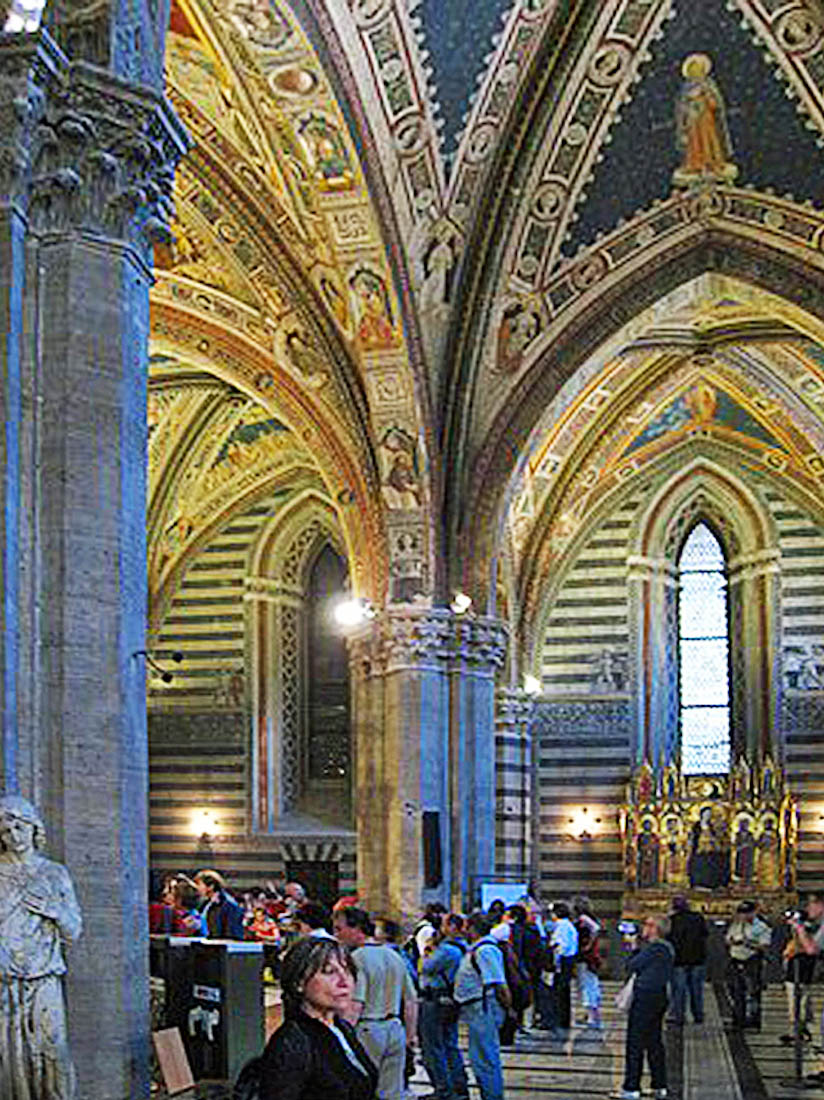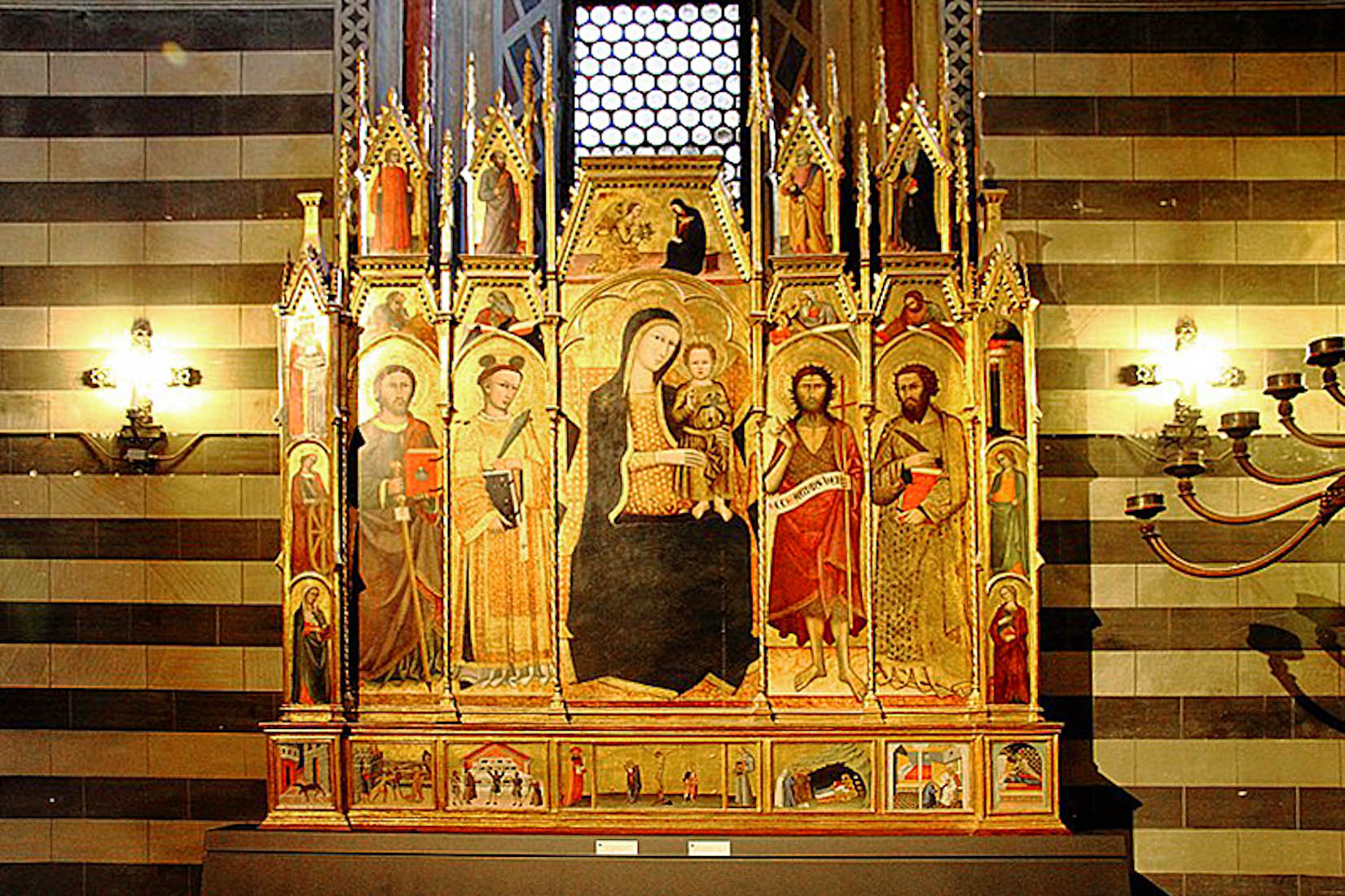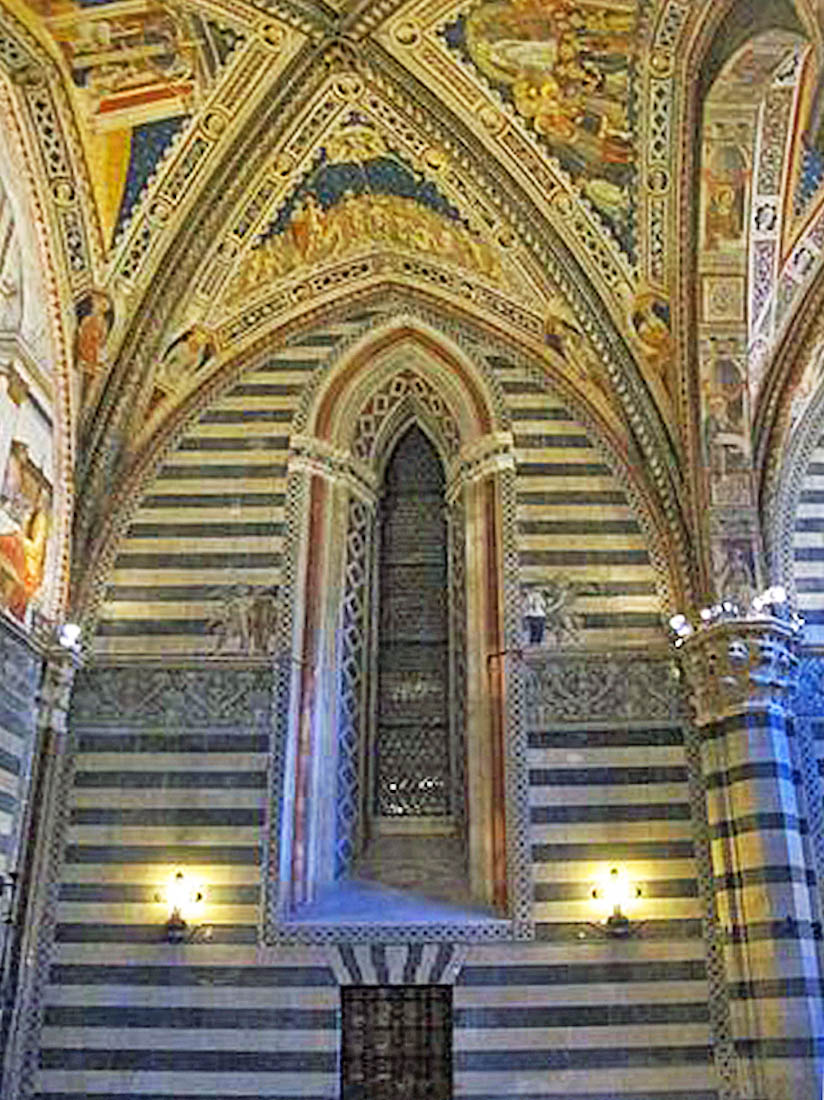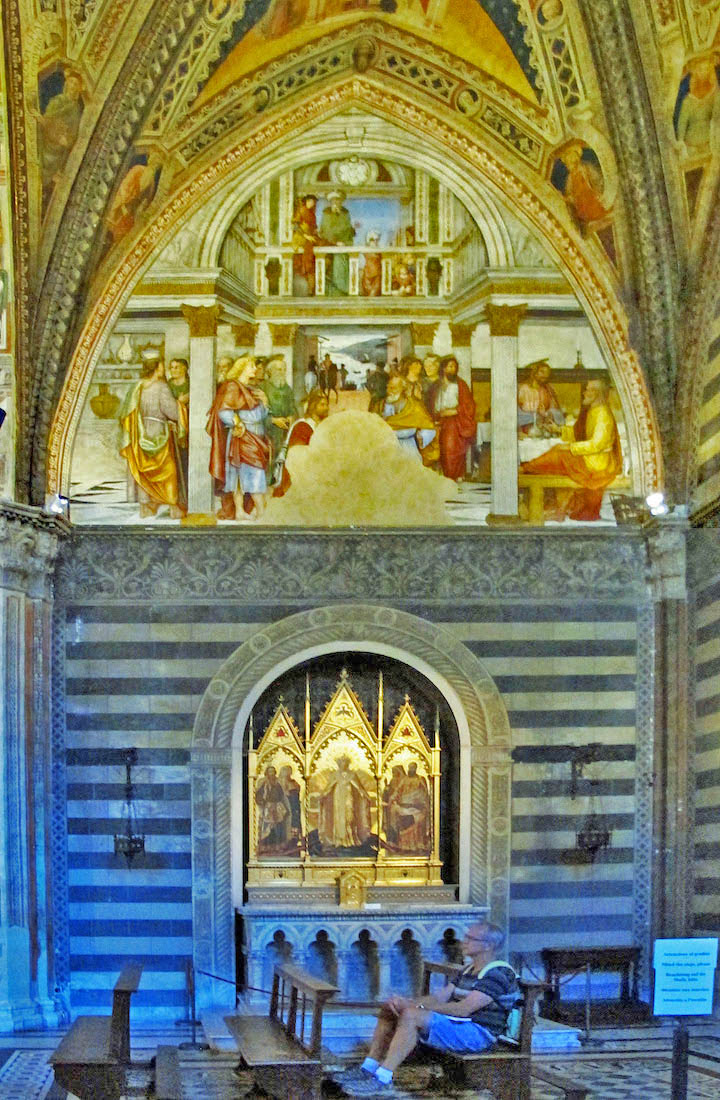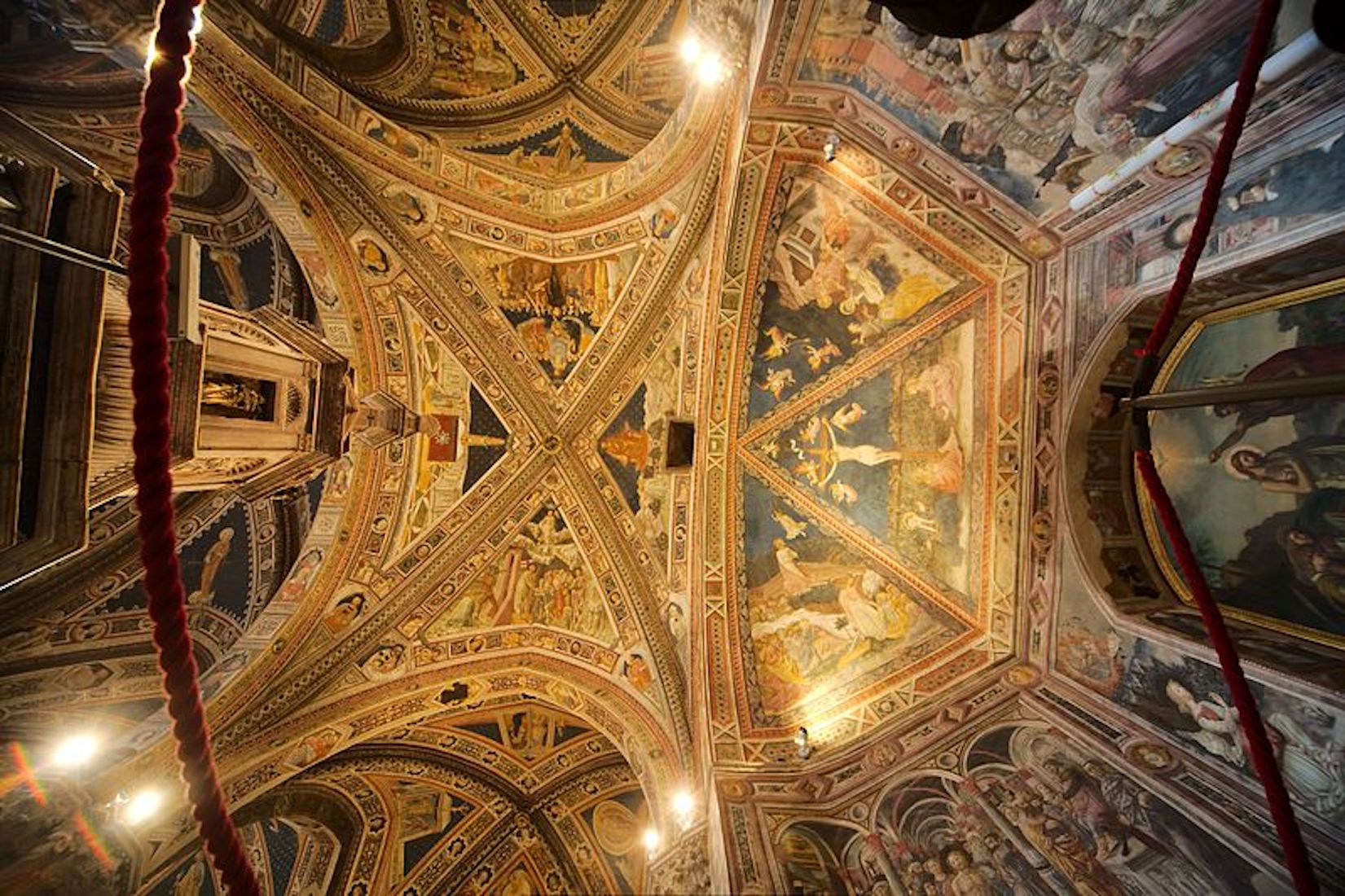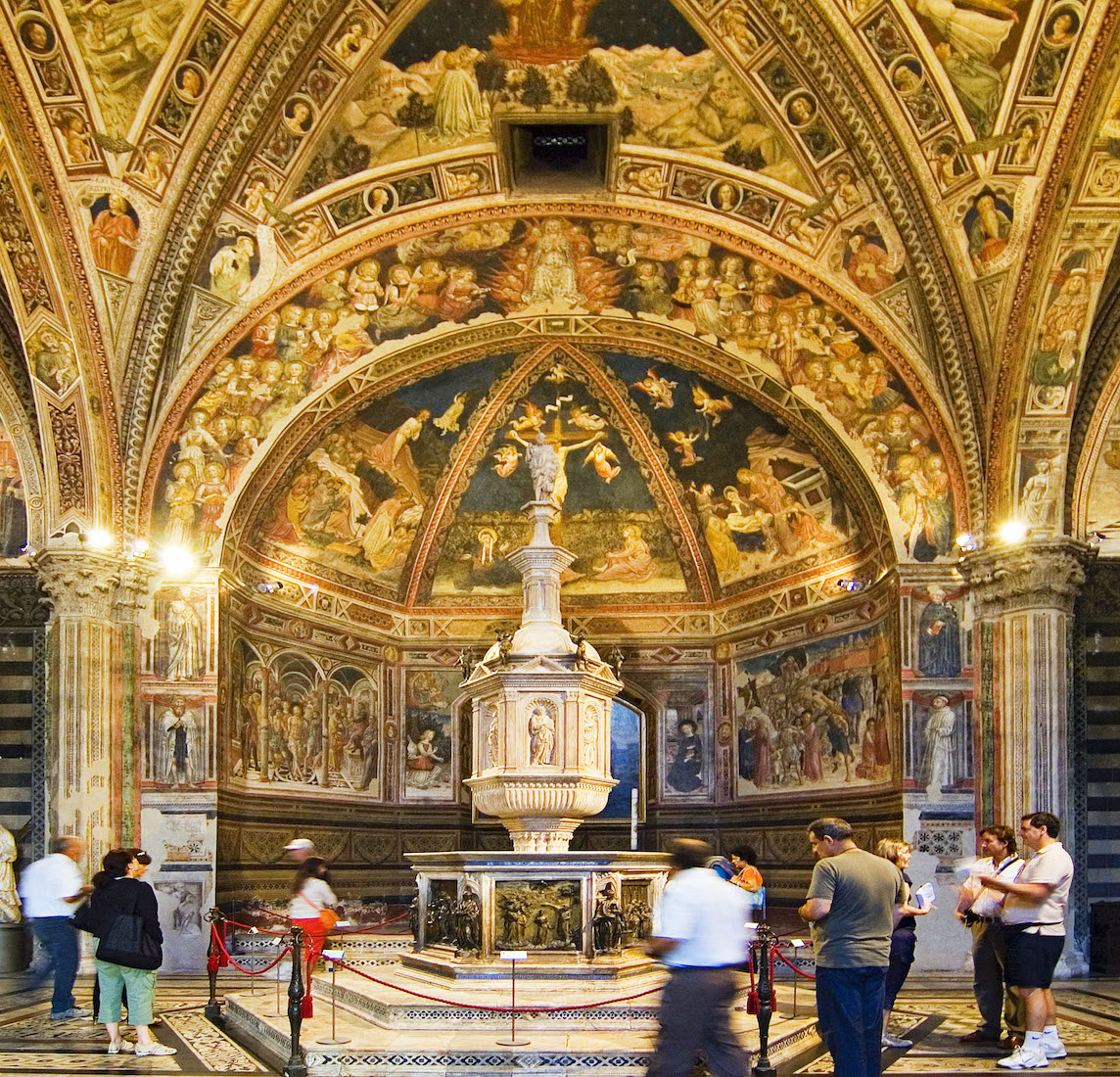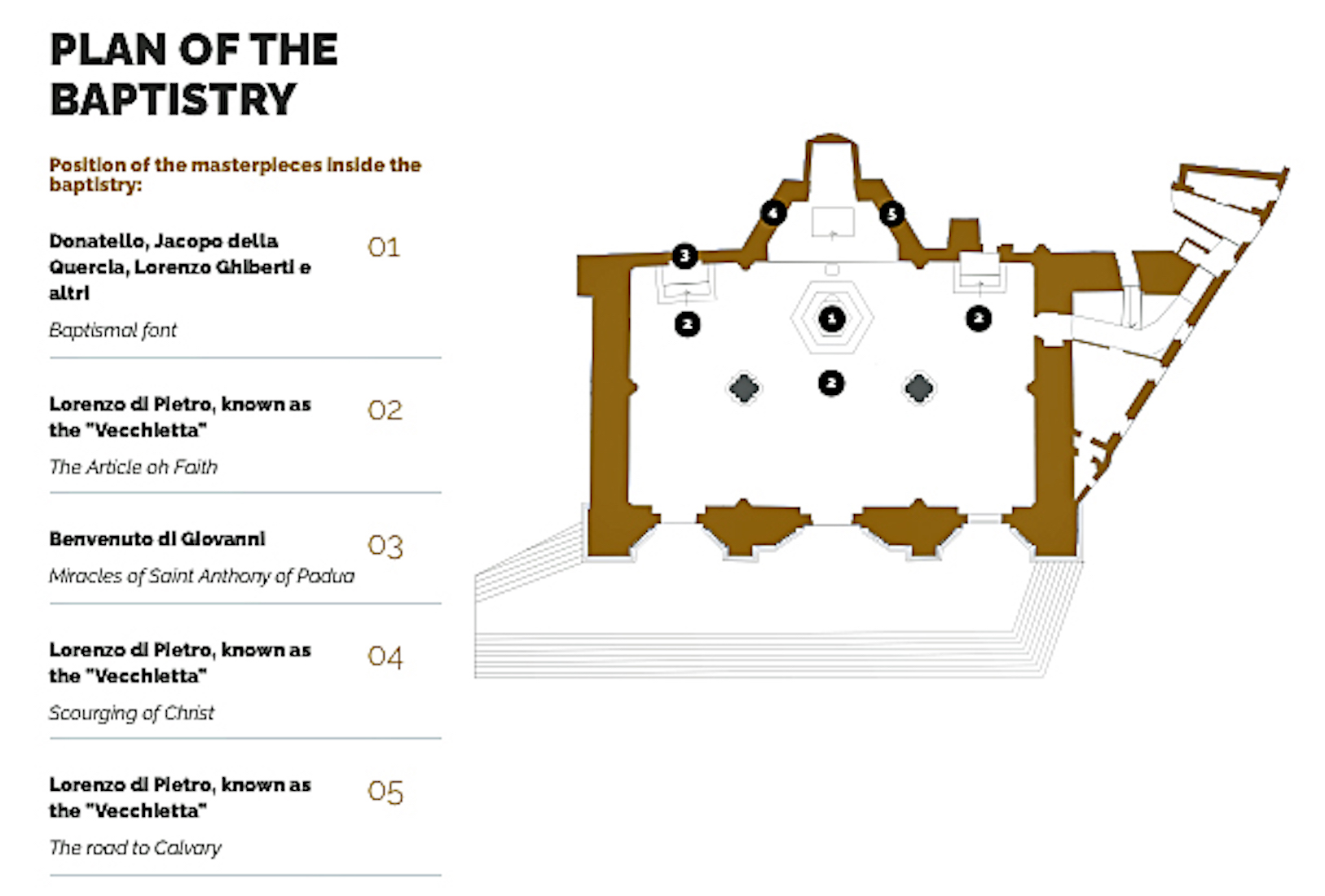
https://operaduomo.siena.it/en/sites/baptistry/
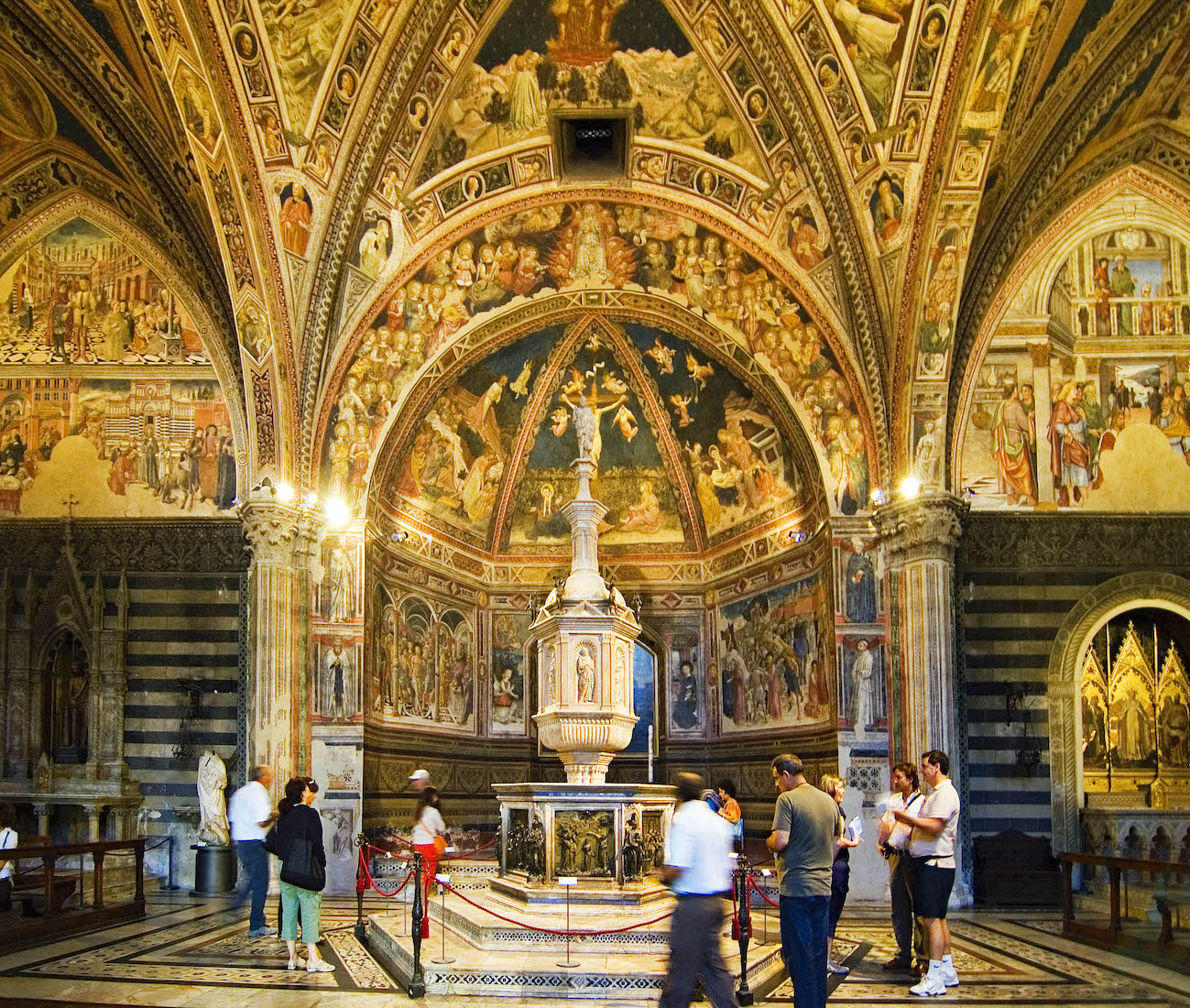
Now it is time for us to explore the Baptistery of St John the Baptist (Battistero di San Giovanni Battista). As we have seen, the Baptistery is situated in the piazza of the same name at the East of the Cathedral, and was built between 1316 and 1325. We enter through the door at the base of the East face. As we enter, we are welcomed with a blaze of golden colour from floor, walls and vaulting above. This Cathedral never ceases to amaze. [Photo Credit: Flickr gaspa] INDEX
G2. REAR OF BAPTISTERY
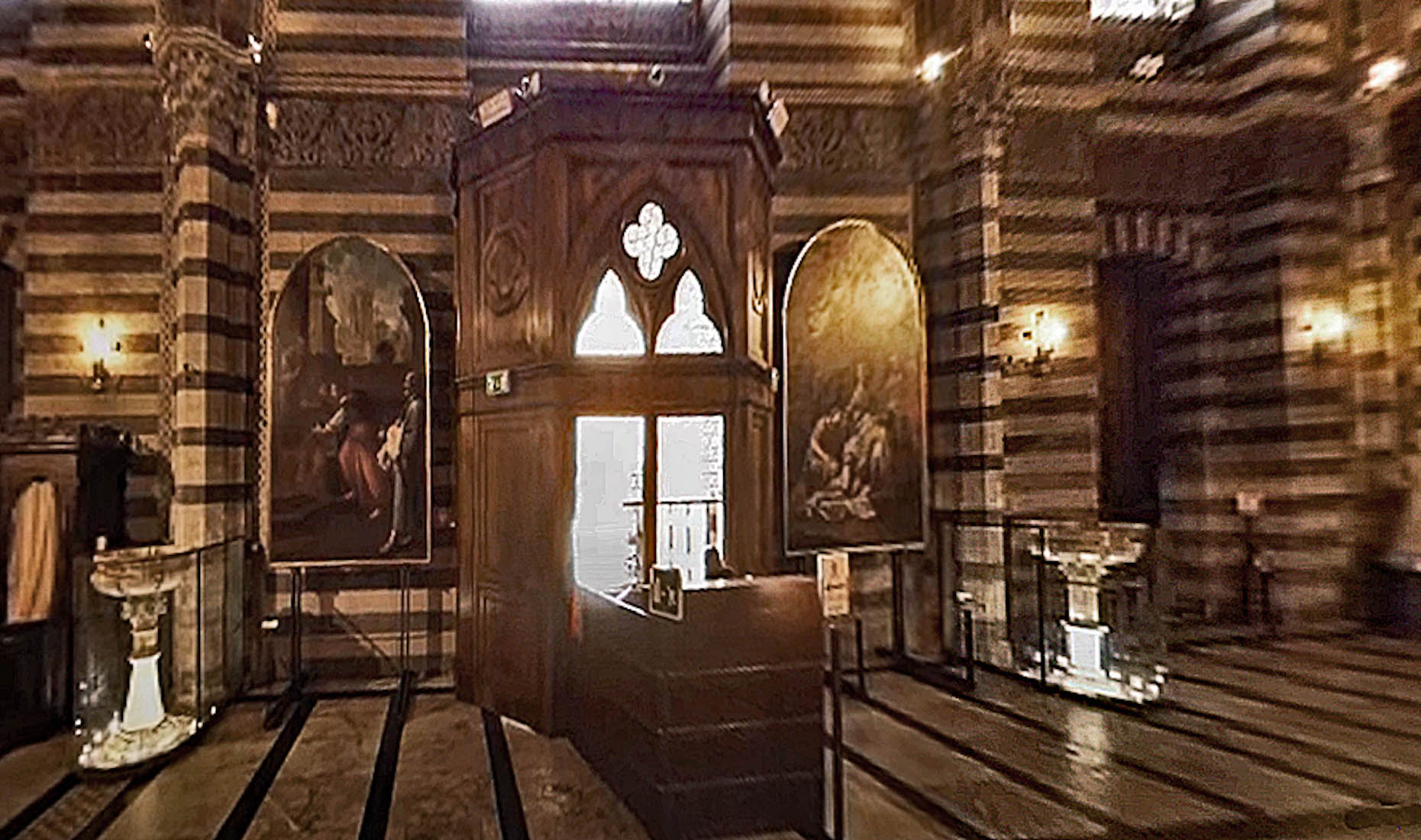
But first we turn to look at the rear wall. On either side of the entry is a painting with a semicircular frame at the top. There is also a stoup on either side, reminding us of the stoup in the Cathedral nave. [Photo Credit: Taken from a video]
G3. STOUPS FB FB
The stoups are large, differing in detail, yet making a very nice matching pair. They are designed to hold holy water.
G4. REAR PAINTINGS FB FB
There are two framed paintings at the rear of the Baptistery, one on either side of the entrance. The scene at right is after Jesus is taken down from the Cross, and shows Mary the mother of Jesus, Mary Magdalene, and the disciple John grieving.
G5. PAINTING ON THE LEFT SIDE FB FB
We move around the Baptistery in a clockwise direction. The wall at left is dominated by this large painting, but I can find no details.
G6. BAPTISM OF JESUS ** FB
Also on this side of the Baptistery, further along, is this painting of the Baptism of Jesus by John. [Photo2 Credit: Taken from Video]
G7. FRONT WALL, LEFT ALTAR FB
Reaching the front wall, we come to a small altar. The arch above – ‘the lunette’ – contains a painting. There is also a statue on either side of the altar.
G8. STATUES FB FB
It is difficult to recognize the rather worn statue at left. It is even harder to recognize the headless statue at right, although looking at his feet, it is probably St George.
G9. LEFT ALTAR FB
This little side altar is something of a mystery. Is it the figure of Christ? And just what is standing by his side?
G10. THE MIRACLES OF ST ANTHONY WC
Above the side altar we see ‘The Miracles of St Anthony’, painted by Benvenuto di Giovanni (ca 1460). Unfortunately the passage of time has obliterated much of the painting. [PhotonCredit: Lforzini]
G11. ACROSS THE BAPTISTERY
We take time to look across the Baptistery. We see the headless St George at left. There are two more statues by the near column, which from this viewpoint, conceals the font. On the far side we see two more altars, and a further ‘lunette’ painting. [Photo Credit: Flickr gaspa]
G12. TWO MORE STATUES FB FB
These two statues stand rather sadly by the near column, probably disappointed at not being recognised!
G13. TO THE RIGHT ALTAR FB
We make our way across to the golden altar on the right side. A bus load ot tourists makes me want to be ‘far from the madding crowd’!
G14. ALTARPIECE WC
This altarpiece was brought to the baptistery from a now-deconsecrated church dedicated to St Stephen. It is the work of Andrea Vanni (1330 or ’33 – after 1414), a close friend and disciple of St Catherine of Siena; the oldest known image of her, a fresco in her order’s church in Siena, was made by him from life. It has been irreverently noted by some that St Stephen resembles Mickey Mouse! At right we catch a glimpse of a large menora which stands in the corner of the Baptistery. [Photo Credit: Rabe!]
G15. WINDOW AND DOOR FB
To the left of the golden altar is a narrow window and below, a (private) door leading through to the sacristy building. The black and white stripes of the walls continue to be a feature down here.
G16. RIGHT SIDE ALTAR FB
Against the front wall on the right side is another golden altar with a large painting in the ‘lunette’ above.
G17. THE IMMACULATE CONCEPTION FB
This alterpiece created in 1896 is of ‘The Immaculate Conception with Saints, Joseph, Anne, Paul and Elizabeth’, by Giuseppe Catani Chitti.
G18. THE WASHING OF THE FEET FB
The painting above, ‘The Washing of the Feet‘ is by Francesco degli Orioli (1489). This fresco painting too has been badly damaged.
G19. VAULTING WC
The vaulting is an amazing blend of colour and pattern. Overall, in the vaulting there are twelve scenes illustrating the Twelve Articles of Faith. These were painted by Lorenzo de Petro, known as Vecchietta, between 1447 and 1450. Each segment of the vault contains the depiction of one article and is accompanied by an apostle in the bottom right hand corner and a prophet in the bottom left hand corner, identified by the inscription in the scroll that each figure holds in his hand. See here for a better idea of the whole ceiling. [Photo Credit: Matthias Kabel]
G20. FONT AND CENTRAL APSE WC
Here is a view of the font with the central apse behind. We are coming to the highlights of the Baptistery! [Photo Credit: Griffendor]


